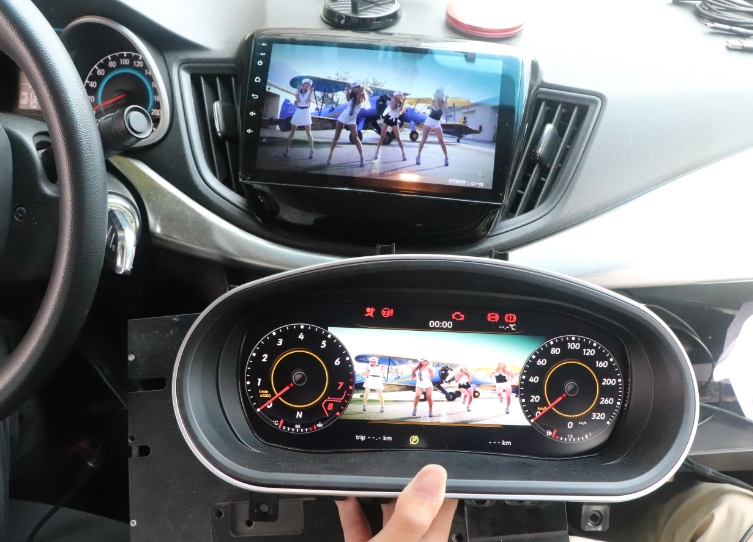LCD services for automotive industry
Liquid Crystal Displays (LCDs) have become integral components in the automotive industry, providing a wide range of applications that enhance vehicle functionality, safety, and user experience. The strengths of LCD displays in the automotive sector lie in their versatility, high resolution, and ability to convey information in a visually appealing and user-friendly manner. Here are specific applications and strengths of LCD displays in the automotive industry:

- Instrument Clusters:
- Application: LCDs are used in modern instrument clusters to display critical information such as speed, fuel level, engine temperature, and navigation instructions.
- Strengths: LCDs offer high-resolution graphics and customizable layouts. They enable dynamic displays that can adapt to different driving modes and provide clear visibility in varying lighting conditions.
- Infotainment Systems:
- Application: LCDs serve as the central displays for infotainment systems, providing features such as navigation, audio controls, smartphone integration, and vehicle settings.
- Strengths: High-quality visuals and touch-screen capabilities enhance the user interface, making it intuitive and responsive. LCDs contribute to a more enjoyable and connected driving experience.
- Head-Up Displays (HUD):
- Application: LCDs are integrated into HUDs to project critical information, such as speed, navigation directions, and safety alerts, onto the windshield.
- Strengths: LCD-based HUDs provide drivers with essential information without requiring them to look away from the road. They offer clear visibility in different lighting conditions and contribute to improved safety.
- Rearview Cameras and Parking Assistance:
- Application: LCD displays are used for presenting video feeds from rearview cameras and parking sensors, aiding drivers during parking maneuvers.
- Strengths: LCDs offer high-resolution images, providing clear visibility of the vehicle’s surroundings. They contribute to enhanced safety and ease of parking.
- Climate Control and Settings:
- Application: LCDs are employed to display and control climate settings, vehicle configurations, and driver preferences.
- Strengths: Touch-screen interfaces on LCDs allow for user-friendly interaction with various vehicle settings. The displays provide real-time feedback, enhancing the overall driving experience.
- Advanced Driver Assistance Systems (ADAS):
- Application: LCDs play a role in displaying information related to ADAS features, such as lane departure warnings, collision alerts, and adaptive cruise control.
- Strengths: LCDs provide a clear visual representation of safety-related information, contributing to the effectiveness of ADAS systems. They are crucial for conveying alerts and notifications to the driver.
- Center Console Displays:
- Application: LCDs are often integrated into the center console for displaying additional information, entertainment options, and connectivity features.
- Strengths: Large, high-resolution displays in the center console enhance the overall aesthetics and functionality of the vehicle interior. They support various multimedia and connectivity options.
- Digital Rearview Mirrors:
- Application: LCD displays are used in digital rearview mirrors to provide an enhanced and adjustable view of the rear of the vehicle.
- Strengths: LCDs offer clear visibility, even in low-light conditions, and can reduce glare. They contribute to improved safety by providing a broader and customizable view of the surroundings.
In summary, LCD displays have revolutionized the automotive industry by offering a wide range of applications that enhance vehicle functionality, safety, and user experience. Their strengths lie in high resolution, versatility, and the ability to present information in a visually appealing and user-friendly manner, contributing to the overall advancement of in-vehicle technology.
